All issues

Volume 21, Issue 3
Displaying 1-11 of 11 articles from this issue
- |<
- <
- 1
- >
- >|
-
[in Japanese]2001Volume 21Issue 3 Pages 125-127
Published: April 15, 2001
Released on J-STAGE: December 11, 2008
JOURNAL FREE ACCESSDownload PDF (425K) -
[in Japanese]2001Volume 21Issue 3 Pages 128-129
Published: April 15, 2001
Released on J-STAGE: December 11, 2008
JOURNAL FREE ACCESSDownload PDF (232K) -
[in Japanese]2001Volume 21Issue 3 Pages 130-133
Published: April 15, 2001
Released on J-STAGE: December 11, 2008
JOURNAL FREE ACCESSDownload PDF (1044K) -
[in Japanese]2001Volume 21Issue 3 Pages 134-138
Published: April 15, 2001
Released on J-STAGE: December 11, 2008
JOURNAL FREE ACCESSDownload PDF (649K) -
[in Japanese]2001Volume 21Issue 3 Pages 139-142
Published: April 15, 2001
Released on J-STAGE: December 11, 2008
JOURNAL FREE ACCESSDownload PDF (607K) -
[in Japanese]2001Volume 21Issue 3 Pages 143-145
Published: April 15, 2001
Released on J-STAGE: December 11, 2008
JOURNAL FREE ACCESSDownload PDF (382K) -
[in Japanese]2001Volume 21Issue 3 Pages 146-149
Published: April 15, 2001
Released on J-STAGE: December 11, 2008
JOURNAL FREE ACCESSDownload PDF (553K) -
Hiroshi UMEGAKI, Chihiro MINAMI, Yumi DOI2001Volume 21Issue 3 Pages 150-155
Published: April 15, 2001
Released on J-STAGE: December 11, 2008
JOURNAL FREE ACCESSWe applied the Profile of Mood States (POMS) to twelve cancer patients and eighteen non-cancer patients to investigate their changes in mood before and after surgery.
We analyzed POMS by six factors-tension, depression, anger, vigor, fatigue, and confusion. As a result, the points of three factors-tension, depression and confusion-decreased and the point of vigor increased remarkably after surgery among non-cancer patients. Among cancer patients, all the factors showed no remarkable change during the pre-and postoperative period. The five factors of tension, depression, anger, confusion and fatigue scored high points for the first to the third postoperative-weeks, compared to noncancer patients.
Our study indicates the importance of psychological care for cancer patients during the perioperative period.View full abstractDownload PDF (695K) -
Minori OKUDA, Tatsuya ICHINOHE, Yuzuru KANEKO2001Volume 21Issue 3 Pages 156-159
Published: April 15, 2001
Released on J-STAGE: December 11, 2008
JOURNAL FREE ACCESSWe studied the sterility of the rubber septums on anesthetic vials and a transfusion bottle and evaluated the disinfection with alcoholsoaked cotton. Neither bacterial nor fungal cells were detected on the rubber septum of the vials by the culture method, while fungal cells were detected in 2 out of 10 vials after swabbing with alcohol-soaked cotton. Staphylococcus aureus and Candida albicans cells were inoculated in anesthetic vials and a transfusion bottle, and their growth was observed. The viable numbers of both organisms was reduced in the lidocaine vial, although increasing numbers were observed in the propofol vial and the transfusion bottle.View full abstractDownload PDF (487K) -
Hajime SHIMODA, Minoru SATO, Toshiro IGARI, Naofumi IWATSUKI2001Volume 21Issue 3 Pages 160-164
Published: April 15, 2001
Released on J-STAGE: December 11, 2008
JOURNAL FREE ACCESSA 19-year-old female suffering from no cardiocirculatory disorders was scheduled for maxillo-mandibular osteotomy. Anesthesia was uneventfully induced with thiamylal and vecuronium for nasotracheal intubation, followed by maintenance with N2O-O2-isoflurane. Immediately after a local injection of lidocaine containing adrenaline, the cardiac rhythm changed from normal sinus to supraventricular tachycardia (SVT). Intravenous disopyramide (DPM) following initial diltiazem (DTZ) progressively restored sinus rhythm with success. An electrophysiological study, which was judged to have priority over the elective operation, revealed the criteria of atrial flutter (AF). The extrinsic adrenaline was esteemed as the trigger most responsible for AF-induced SVT.
Oral DPM was administered preoperatively and ferypressin was applied for local injection under maintenance with N2O-O2-sevoflurane supplemented with intravenous fentanyl. Nitroglycerin (TNG) and DTZ as hypotensive agents were simultaneously infused by intravenous titration in order to reduce intraoperative blood loss under provision of preservative autologous blood donation. By avoiding any anesthetic medication or geneses likely to bring about tachycardia, the hemodynamical conditions were able to be controlled satisfactorily without any SVT episodes throughout the second perioperative course.
In conclusion, prophylactic administration of DTZ combined with TNG to suppress tachyarrhythmia may be a safe and useful strategy to smooth deliberate hypotensive anesthesia for this patient.View full abstractDownload PDF (641K) -
Takao HIRATA, Norimasa MATSUDA, Takashi TAMURA, Naoki MASUDA, Shigeki ...2001Volume 21Issue 3 Pages 165-169
Published: April 15, 2001
Released on J-STAGE: December 11, 2008
JOURNAL FREE ACCESSWe report intraoperative cardiac arrest in a patient who was medicated by antiarrhythmic drugs. A 70-year-old male was scheduled for amputation of necrotic digiti pedeis due to arteriosclerosis obliterans. He takes daily pirmenol for premature ventricular contractions (PVC), and undergoes hemodialysis three days a week.
Anesthesia was induced with thiamylal, fentanyl, and vecuronium and maintained with nitrous oxide (60%), oxygen (40%) and sevoflurane (1-3%). After inducing of anesthesia, his serum potassium level was 2.4mEq•l-1. Five minutes after the start of surgery, several PVC appeared and there was a drop in ventricular fibrillation (Vf). After immediate cardiopulmonary resuscitation and countershock, sinus rhythm was restored within approximately five minutes.
In this case, triggered activity, a factor in life-threatening arrhythmia, was induced by interaction with pirmenol and hypokalemia, and additively an insufficient depth of anesthesia brought PVC to Vf.
It was considered that the class Ia antiarrhythmic drug should be reduced before surgery under general anesthesia for the hemodialysis patient, and that hypokalemia should be avoided.View full abstractDownload PDF (592K)
- |<
- <
- 1
- >
- >|